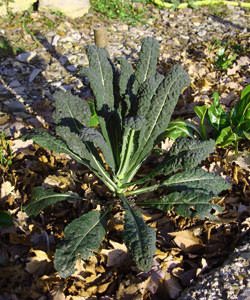

Photo by Rick Gush
I hope to harvest broccoli from 100 plants this year.
It’s finally September, and that means it’s time to change all the beds by ripping out whatever’s left of all the spring crops, preparing the soil and replanting with the winter crops. I’ve grown really tired of the old and ratty spring crops, so this is all big fun for me.
My target for winter planting is to find space for 100 broccoli plants. We eat a lot of broccoli during the cold months, so I’m making that the principal crop for the cold season. I have 47 broccoli plants planted so far and hope to have all 100 planted by the end of next week.
We eat broccoli steamed, in soups, baked into vegetable pies and sometimes raw in salads. I’m particularly fond of the electric-green color of fresh, steamed broccoli. It’s just so vivid that it seems obvious that eating it is good for me. Luckily, I really like the taste, too! I usually put mustard on the steamed broccoli. My wife chides me, because she is suspicious of mustard and is not sure eating it so frequently is good for me. Ha!
Last year we had the “Great Broccoli Disaster,’ when I bought a bunch of broccoli plants at a different nursery than my usual one. What I had assumed would be the standard big-head-producing broccoli turned out to be the chartreuse-colored broccoli Romano. Phooey! That chartreuse stuff is OK, but its taste is more like cauliflower and has the unfortunate habit of not producing much after the main head has been harvested. Regular broccoli, on the other hand, keeps producing new sprouts for many months after the first head has been harvested.

Photo by Rick Gush
Black kale is a wonderfully versatile plant, which we can harvest from every day.
I think it’s important to get the broccoli up and growing while the days are still relatively long and the weather is warm. The bigger the plants are when the really cold weather hits, the more harvestable broccoli they will produce over the season. When I lived in Las Vegas, I always planted my broccoli in November, and it did just fine, but here, the earlier start pays big dividends.
Broccoli isn’t the only thing we’ll grow this winter. Fava beans will take up one of the big beds and beet greens and cultivated arugula will be given a fair amount of space. I’ll grow a few Brussels sprouts, a few cauliflowers and a handful of celery plants.
We don’t each much cabbage, but we do like black kale, which can be harvested a handful of leaves at a time. Black kale is also versatile, and we eat it steamed, in soups and in vegetable pies. This is an old-fashioned peasant’s plant, and I get big points from my mother-in-law for growing it. In season, she’ll ask for a few leaves almost every day. Keeping my mother-in-law happy is a big part of my recipe for domestic tranquility.
There’s something about this whole replanting process that reminds me of getting a haircut after months without one. The clean feel of the newly replanted garden gets me excited about laboring for hours in the hot sun again.




